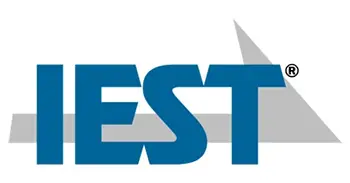IEST: Institute of Environmental Sciences and Technology

IEST, the Institute of Environmental Sciences and Technology, is a nonprofit organization that develops and publishes standards in a variety of fields, known primarily for its standards regarding contamination control, reliability testing and nanotechnology. Headquartered near Chicago, United States, IEST has done considerable work revising standards used by United States federal agencies and its military. IEST is the secretariat of ISO/TC 209 (International Organization for Standardization/Technical Committee), as well as serving as the administrator for the U.S. TAG (United States Technical Advisory Group) to ISO/TC 209. Standards from IEST are available both individually, directly through the ANSI webstore, and as part of a Standards Subscription. If you or your organization are interested in easy, managed, online access to standards that can be shared, a Standards Subscription may be what you need - please contact us at: [email protected] or 1-212-642-4980 or Request Proposal Price.
Below are IEST's best-selling standards. To find additional standards, please use the search bar above.
IEST-RP-CC034.4
HEPA and ULPA Filter Leak Tests
This Recommended Practice (RP) covers definitions, equipment, and procedures for leak testing high-efficiency particulate air (HEPA) filters and ultralow-penetration air (ULPA) filters in the factory as they are produced, at the job site before they are installed, and after they are installed in cleanrooms and in unidirectional-flow, clean-air de-vices. When used in conjunction with other RPs, including IEST-RP-CC001, IEST-RP-CC002, IEST-RP-CC006, IEST-RP-CC007, IEST-RP-CC021, IEST-RP-CC028, and IEST-RP-CC036, this RP may be used to define the basis of an agreement between the customer and supplier in the specification and procurement of HEPA and ULPA filters, and in the testing of these filters in unidirectional-flow, clean-air devices and cleanrooms. This RP also includes procedures for measuring the uniformity of the aerosol challenge approaching the filter under test. Although the scanning methods in the factory and in situ (in the field) appear similar, they are not identical, mainly due to increased variability for in-situ testing. In this revision of the RP, the recommended procedures for factory and in-situ testing are separated for ease of use. In factory and in-situ testing, if a leak is detected while scanning a filter, it is recommended that the magnitude of the leak be quantified with the scanning probe stationary over the detected leak.
IEST-RP-CC002.4
Unidirectional-Flow, Clean-Air Devices
This Recommended Practice (RP) covers definitions, procedures for evaluating performance, and major require-ments of unidirectional-flow, clean-air devices. The RP may be used to define a basis of agreement between cus-tomer and supplier in the specification, procurement, and certification testing of unidirectional-flow, clean-air devices with self-contained motor-blower(s) and powered terminal units with replaceable filters. This document also presents recommendations for recertification of devices owned by the customer, under direction of the customer.
IEST-RP-CC001.6
HEPA and ULPA Filters
This Recommended Practice (RP) covers basic provisions for HEPA (high efficiency particulate air) and ULPA (ultra-low penetration air) filter units as a basis for agreement between customers and suppliers. Filters that meet the requirements of this RP are suitable for use in clean air devices and cleanrooms that fall within the scope of ISO 14644 and for use in supply air and contaminated exhaust systems that require extremely high filter efficiency (99.97% or higher) for submicrometer (╡m) particles. This RP describes 11 levels of filter performance, or types, and five grades of filter construction. For the types and grades that require scanning, these filter types generally apply to rectangular filters. Semi-circular, cylindrical, V-bank filters and other construction configurations may not be readily scanned and thus will not meet the require-ments of the filter types requiring scanning. While many of the performance measurement techniques can be adapted to other filter configurations, the filter types as described in this RP should be applied only to rectangular, flat panel filters. The customerÆs purchase order should specify the level of performance and grade of construction required. The customer should also specify the filter efficiency required if the efficiency level is not covered by the perfor-mance levels specified in this RP. NOTE: Products and procedures discussed in this RP may involve hazardous materials, operations, and equipment. This RP does not purport to address all of the safety problems associated with its use. It is the responsibility of the user to consult and establish appropriate safety and health practices and to determine the applicability of regulatory limita-tions prior to use of this RP.
